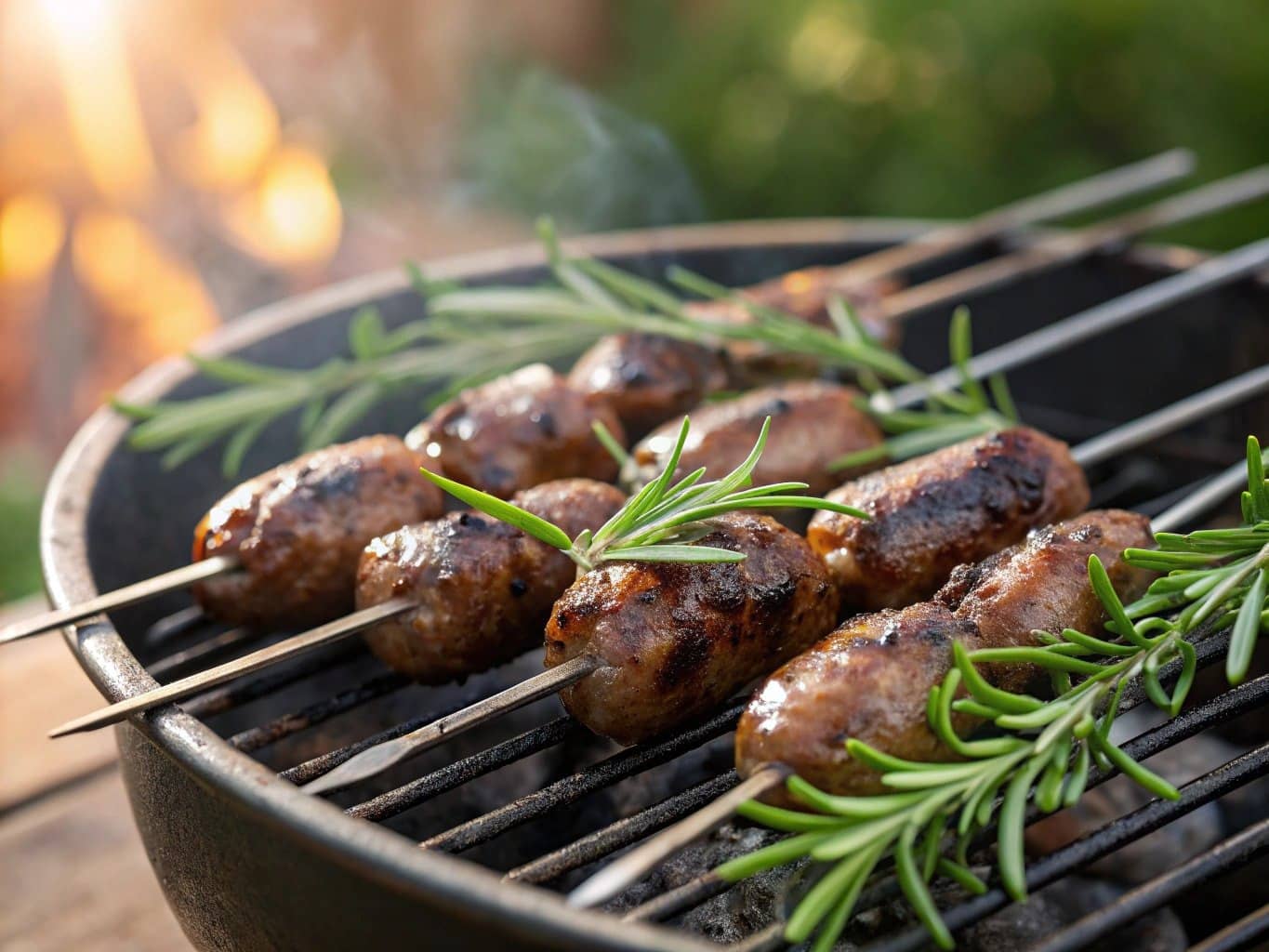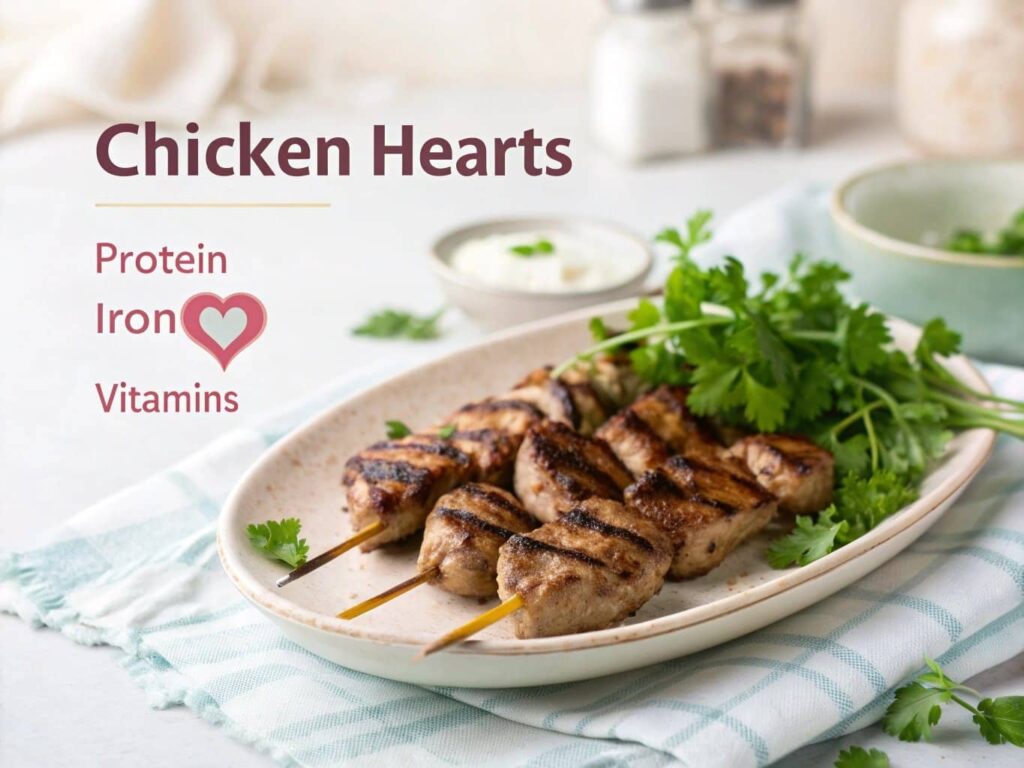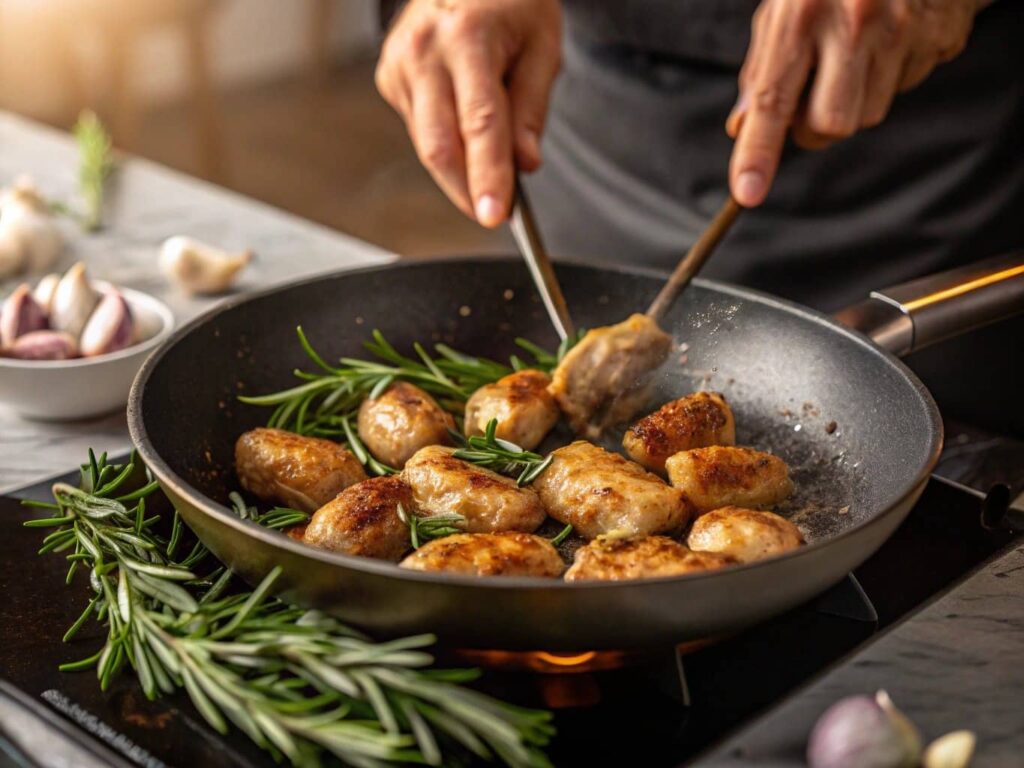Have you ever wondered, “What does a chicken heart taste like?” Well, you’re not alone! It might sound a little unusual, but chicken hearts are actually a delicacy in many cultures. If you’re up for trying something new in the kitchen, understanding what to expect in terms of flavor and texture is key! This article will help you uncover everything you need to know about the taste of chicken hearts, how to cook them, and why they’re such a unique and healthy food option. 🍗🍴
Table of contents
Exploring the Taste of Chicken Heart
Let’s be honest – the idea of eating a chicken heart might sound strange to some people. After all, we’re used to eating chicken breasts or thighs, but what about the little heart inside? In some parts of the world, chicken hearts are considered a tasty and nutritious treat. But what does a chicken heart really taste like?
The flavor of chicken hearts is definitely not the same as regular chicken meat. It’s more intense and rich, with a slightly gamey taste, similar to beef liver but a bit milder. The texture can be tender when cooked correctly, with a slight chewiness. It’s packed with protein and other nutrients, making it a great choice for those who enjoy trying new foods.
What Exactly Is a Chicken Heart?
Before we dive into the taste, let’s get to know the chicken heart a little better. A chicken heart is a muscle, and just like other organs, it serves an important function in the bird’s body – pumping blood. So, when you eat it, you’re eating a part of the chicken that’s quite different from the usual cuts of meat you might be familiar with.
Chicken hearts are small and have a distinct shape, kind of like little mini hearts. They’re typically sold in bags and are considered a byproduct of poultry processing. While not as popular as other cuts of chicken, they’re becoming more well-known in the culinary world, especially for people looking for budget-friendly, high-protein foods.
Understanding the Anatomy of a Chicken Heart
The chicken heart, like all hearts, is made of muscle tissue. But what makes it interesting is the way it’s built. The heart is full of fibers that make it firmer and denser than, say, a piece of chicken breast. This gives it that chewy texture. Inside, it has a bit of fatty tissue, which contributes to its rich flavor. Because the heart has been pumping blood, it’s also full of nutrients, including iron, which is important for your health.
Common Uses of Chicken Hearts in Cooking
While you might not find chicken hearts on every menu, they’re used in various dishes around the world. From being grilled on skewers to being used in stews, there are many ways to enjoy chicken hearts. In places like Brazil, Mexico, and parts of Asia, they’re considered a delicacy and are served in different ways. They can be fried, stewed, or even roasted – the possibilities are endless!
In fact, if you’re looking to try chicken hearts for the first time, grilling them on skewers is a popular choice. The grilling process brings out the smoky flavor while keeping the heart’s tender texture. Season them with a little bit of salt, pepper, and your favorite spices, and you’ve got yourself a delicious treat. 🔥🍗
Taste Profile: What Does a Chicken Heart Really Taste Like?
Now, let’s get to the big question – what does a chicken heart taste like? When it comes to flavor, chicken hearts aren’t as mild as regular chicken meat. They have a bold, meaty taste, which is often described as rich and savory. Some people say it’s similar to the taste of beef liver but without the strong, overpowering flavor that liver can sometimes have. Chicken hearts also have a slightly gamey undertone, which adds to their uniqueness.
The texture of chicken hearts can vary depending on how they’re cooked. If overcooked, they can become rubbery, which is why it’s important to cook them just right. The perfect chicken heart should be tender but still firm, with a slight chewiness that gives you a satisfying bite. If you’re used to eating other organ meats, you might find the texture similar to that of kidneys or even gizzards, but with a bit more tenderness.
Comparison to Other Meats
If you’re curious about how chicken hearts compare to other meats, think of them as somewhere between dark chicken meat and beef. While regular chicken meat is lighter and more tender, chicken hearts are richer, with a deeper, more intense flavor. It’s not exactly like beef, but it’s closer to that family of meats than to chicken. If you like liver or other organ meats, you’ll probably enjoy chicken hearts too!
Texture vs. Taste: A Unique Culinary Experience
One of the things that make chicken hearts so special is their texture. Unlike the smoothness of a chicken breast or the softness of a thigh, the heart’s texture is more complex. It’s firmer and chewier, but not in a tough way. The muscle fibers are tightly packed, giving it a satisfying bite that complements the flavor. Think of it like chewing on a tender piece of steak, but a little bit more delicate.
As you take a bite, you’ll notice the combination of rich, savory flavors and a texture that’s both tender and a bit firm. This gives you a truly unique culinary experience, one that’s different from anything you’ve probably tried before. So, if you’re ready to step outside of your comfort zone, chicken hearts are definitely worth trying! 🍽️
How Chicken Hearts Are Cooked
When it comes to cooking chicken hearts, there are plenty of options. However, one of the most important things to keep in mind is the cooking time. If you overcook them, they can turn rubbery and lose their delicious texture. So, how can you make sure they turn out just right? Here are a few tips for cooking chicken hearts perfectly every time.
Popular Cooking Methods for Chicken Hearts
Chicken hearts can be cooked in several different ways, and each method brings out the flavor in a slightly different way. Here are some popular methods to try:

- Grilled: Grilling is a popular way to cook chicken hearts. It adds a smoky flavor while keeping the hearts tender. Simply marinate them in your favorite spices, skewer them, and grill them until golden brown. 🍢
- Fried: If you like crispy foods, try frying chicken hearts. Coat them in flour, seasoning, and fry until crispy on the outside. It’s a great way to add extra texture and flavor. 🍤
- Stewed: For a more comforting dish, try stewing chicken hearts in a flavorful broth. This method keeps them tender and juicy. 🍲
- Roasted: Roasting is another great method. It gives the hearts a crispy exterior and a juicy interior. Try seasoning them with herbs like rosemary and thyme for extra flavor. 🍖
Each method of cooking brings out the chicken heart’s unique flavor, so feel free to experiment with different styles until you find your favorite! 👨🍳
Tips for Tenderizing Chicken Hearts
One of the most common problems when cooking chicken hearts is that they can become tough if not prepared properly. Here are some tips to help you tenderize them:
- Marinate: Marinating the chicken hearts in an acidic marinade (like lemon juice or vinegar) for at least 30 minutes can help break down the muscle fibers and make them more tender. 🍋
- Avoid Overcooking: As mentioned earlier, overcooking chicken hearts can make them tough. Be sure to cook them just until they’re no longer pink in the center, and you’ll have a perfect texture. 🔥
- Slow Cooking: If you’re stewing chicken hearts, cooking them slowly over low heat will help tenderize the meat. Don’t rush it! ⏳
By following these simple tips, you can make sure your chicken hearts turn out tender and flavorful every time!
The Nutritional Value of Chicken Hearts
Not only are chicken hearts tasty, but they’re also packed with nutrients! They’re a great source of protein, iron, and other essential vitamins and minerals. If you’re looking for a food that’s both delicious and healthy, chicken hearts can be a great addition to your diet.
Health Benefits of Eating Chicken Hearts
Chicken hearts are rich in protein, which helps build and repair muscles. They’re also full of iron, which is important for making red blood cells and carrying oxygen throughout your body. Iron-rich foods like chicken hearts can help prevent iron-deficiency anemia, which can leave you feeling tired and weak.
In addition to protein and iron, chicken hearts are also a good source of vitamins like B12, which helps keep your nervous system healthy, and niacin, which supports your skin and digestive system. So, not only do chicken hearts taste good, but they’re also packed with nutrients that are great for your body!
Chicken Hearts in a Balanced Diet
Adding chicken hearts to your diet is a great way to get more protein and nutrients without breaking the bank. They’re inexpensive, versatile, and packed with goodness! Whether you’re looking to build muscle, improve your iron levels, or just try something new, chicken hearts can be a great choice.

Common Problems with Cooking Chicken Hearts
When it comes to cooking chicken hearts, there are a few common issues people run into. But don’t worry! We’ll go over these problems and how to fix them, so you can enjoy perfectly cooked chicken hearts every time.
Overcooking vs. Undercooking Chicken Hearts
One of the most common mistakes when cooking chicken hearts is overcooking them. If you cook them for too long, they can turn rubbery and dry. On the other hand, if you don’t cook them long enough, they might be too raw or chewy. The key is to find the perfect balance. Aim to cook chicken hearts just until they’re no longer pink inside, and you’ll be good to go!
How to Avoid a Rubbery Texture
If you’re worried about your chicken hearts becoming rubbery, try using one of the tenderizing tips mentioned earlier, like marinating or slow cooking. These methods help break down the muscle fibers and ensure a more tender bite.
Tips for Enhancing the Taste of Chicken Heart
Once you’ve mastered cooking chicken hearts, you can enhance their flavor even more with a few seasoning tricks!
Seasoning Ideas to Bring Out the Best Taste for Chicken Heart
Chicken hearts have a savory flavor that pairs well with a variety of seasonings. Here are a few ideas:
- Garlic and herbs: Garlic, rosemary, thyme, and other herbs complement the rich flavor of chicken hearts beautifully. 🧄🌿
- Spicy seasonings: If you like a little heat, try adding chili powder, paprika, or cayenne pepper to your chicken hearts for a spicy kick. 🌶️🔥
- Lemon zest: A little bit of lemon zest can add a fresh, citrusy brightness that balances out the richness of the chicken hearts. 🍋
Pairing Chicken Hearts with Side Dishes
To create a well-rounded meal, pair chicken hearts with tasty side dishes. Here are a few ideas:
- Grilled vegetables: Grilled veggies like bell peppers, zucchini, and onions pair perfectly with chicken hearts. 🥒
- Rice or couscous: A bed of rice or couscous is a great way to balance the rich flavors of the chicken hearts. 🍚
- Salads: A light, crisp salad with fresh greens can add a refreshing contrast to the savory chicken hearts. 🥗
These side dishes will complement the flavors of chicken hearts and create a balanced, delicious meal. 😊🍽️
Where to Buy Chicken Hearts and What to Look For
Now that you’re ready to try cooking chicken hearts, you might be wondering, “Where do I even buy chicken hearts?” Don’t worry; they’re not as hard to find as you might think! In fact, chicken hearts are available in many grocery stores and butcher shops. Here’s where you can look for them, plus a few things to keep in mind when purchasing them. 🛒🍗
Best Places to Find Fresh Chicken Hearts
The first place you should check is your local butcher or grocery store. Many larger supermarkets, especially those with an international or specialty section, carry chicken hearts. They’re often sold in bags or small containers, and you’ll typically find them in the freezer section, alongside other poultry parts.
If you’re having trouble finding chicken hearts at your local grocery store, try visiting an Asian or Latin American market. These markets often sell a wide variety of offal (organ meats) like chicken hearts, livers, and gizzards, which are commonly used in their cuisines.
Another option is to check with local farms or poultry producers. Many farms offer fresh poultry parts, including chicken hearts, and they can even sell them directly to you. 🌾🐔
What to Look for When Buying Chicken Hearts
When buying chicken hearts, there are a few things to keep in mind to ensure you get the best quality product:
- Freshness: Whether you’re buying fresh or frozen chicken hearts, make sure they look fresh and free from any freezer burn if frozen. They should have a nice, bright color and not be discolored or slimy. 💎
- Packaging: Look for chicken hearts that are sealed tightly and haven’t been exposed to air. If they’re in the freezer section, ensure the package is well-sealed and hasn’t been opened. 🏷️
- Smell: Fresh chicken hearts should have a neutral or slightly gamey smell, but they shouldn’t have a strong, unpleasant odor. If they do, it’s best to avoid them. 🚫
By following these simple tips, you can make sure you’re getting the best chicken hearts for your next cooking adventure!
Frequently Asked Questions (FAQ)
As you get ready to try chicken hearts, you might have some questions. Here are a few of the most frequently asked questions about chicken hearts and their preparation. 🤔💬
Are Chicken Hearts Safe to Eat?
Yes, chicken hearts are safe to eat as long as they’re cooked properly. Just like any other poultry product, it’s important to ensure that chicken hearts are cooked thoroughly to avoid any foodborne illnesses. Make sure they’re cooked all the way through, with no pink in the center, and you’ll be good to go! 🔥🍽️
How Should Chicken Hearts Be Stored?
If you’re not using chicken hearts right away, you can store them in the refrigerator for up to 1-2 days. Just make sure they’re kept in an airtight container to maintain freshness. If you’re not planning on using them soon, freezing them is a great option! Simply place them in a freezer-safe bag or container, and they’ll last for up to 3 months. ❄️
Can You Eat Chicken Hearts Raw?
While it’s possible to eat chicken hearts raw, it’s not recommended due to the risk of bacteria or other pathogens. Always make sure to cook chicken hearts thoroughly to ensure they’re safe to eat. 🔪
Why You Should Try Chicken Hearts at Least Once
Now that you know what chicken hearts taste like, how to cook them, and how nutritious they can be, it’s time to give them a try! While they might seem a little unusual at first, chicken hearts offer a bold, savory flavor and a satisfying texture that’s totally worth exploring. They’re inexpensive, nutritious, and versatile, making them a great option for anyone looking to add variety to their diet.
Whether you’re grilling, frying, or stewing them, chicken hearts are a fun and delicious way to step outside of your usual meal routine. So, what are you waiting for? Grab some chicken hearts, get cooking, and enjoy this unique treat! 🥘🍗
Remember, food is all about trying new things and expanding your taste horizons. Chicken heart taste might be a little different, but it’s definitely worth a try. So, go ahead – take the plunge, and you might just discover your new favorite dish! 🌟
If you’re curious about how chicken hearts can fit into your healthy eating plan, check out our article on Chicken Hearts: Health Benefits and Easy Recipes You’ll Love to learn more about this nutritious delicacy and discover some delicious ways to cook them. 🍽️
For more tips on using leftover chicken in creative ways, take a look at our guide on How Long Is Leftover Rotisserie Chicken Good in the Fridge?, where we share helpful advice on storing and reheating your chicken leftovers safely! 🍗




